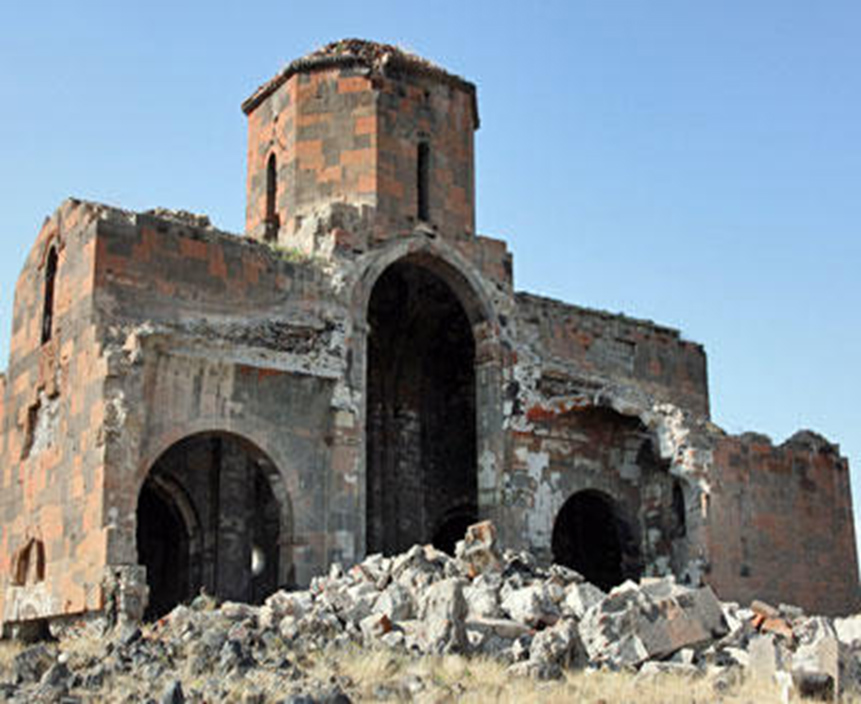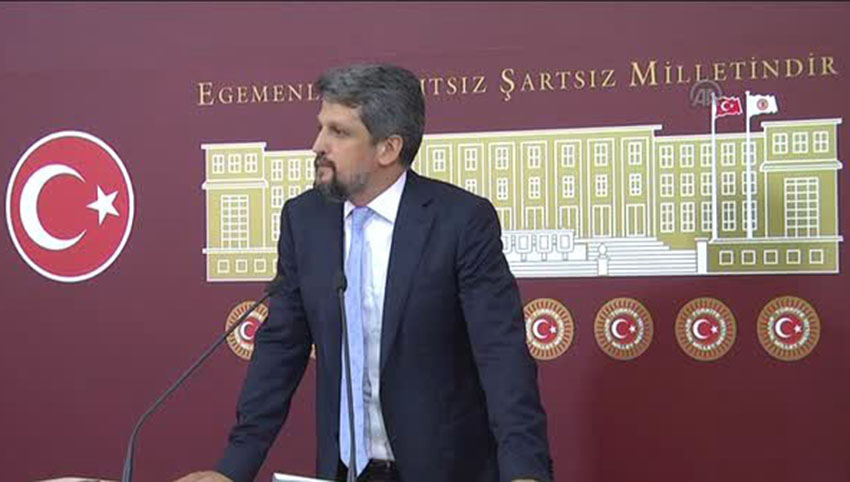By Florence Avakian
NEW YORK — An awe-inspiring, but gravely worrying lecture on the preservation of historic Armenian churches in danger of collapse, was presented by leading Armenian art historian Dr. Christina Maranci recently. It was sponsored by the Zohrab Information Center in New York. The 7th century religious icons in question, Mren, Zvartnots and Pighni were explored in the context of their unique designs, their historical time period, their vibrant culture, and their current significance.
Dr. Maranci who is currently in Turkey, investigating the current condition of the church of Mren, is the Arthur H. Dadian and Ara T. Oztemel Professor of Armenian Art at Tufts University. During the lecture, she also introduced her latest book, “Vigilant Powers: Three Churches of Early Medieval Armenia”.
Focusing her talk exclusively on Mren which is in an active seismic region, she warned that it “could fall to the ground any day”. It is one of more than 100 churches thought to date from 7th century Armenia and Georgia, the “Golden Age” of building which was “more robust than anyplace in the contemporary Mediterranean area. These monuments were produced in the South Caucasus – Turkey, Iran, Georgia, Armenia, Azerbaijan, during a time of escalating warfare between Byzantine and Persian superpowers, and saw the shakedown of Byzantine power, the collapse of the Sasanian dynasty, and the establishment of the Umayyad caliphate, all of which brought on the beginning of the Middle Ages.
Completed c. 639, and remarkable for its size – 32 meters in length, Mren is the second-largest domed basilica preserved from the 7th century Caucasus, and “exceeds in length the far more celebrated and nearby 11th century Cathedral of Ani,” pointed out the Armenian scholar. It is also very rich in sculpture.”
Situated in the Kars region, it is today a closed and militarized border zone, just a few kilometers from Armenia. This all complicated Maranci’s application for a research visa which in 2010 was denied. She related that Mren passed from Ottoman to Russian to Armenian, and finally in 1920 to Turkish control under the terms of the Treaty of Alexandropol. Also of great interest to her, was evidence of a palace at the site which from the 5th to 13th centuries had been a large settlement, with the possibility of roads, or even canals for irrigating the vineyards, for which Mren was famous.
The scholar revealed that in 2008, the south façade of Mren had completely collapsed. “In structural terms, it means the beginning of the end.” This was in addition to the battering of the dome piers probably from sledgehammers, the missing facing stones, the 13th century inscriptions in rubble, and the north side with no support.
“So it became necessary to become not just the historian of Mren, but its custodian and advocate as well,” Professor Maranci stated with obvious concern.
Finally in 2013, with intensive research under her belt, she was able to visit the site for a very brief period of time via tractor wagon, and a 3-hour “brutal” hike, all without permission from the local village, and in constant danger of military arrest.
Mren, she explained is surrounded by a high stony plateau, deep river gorges, and steep ravines, but the landscape is “tactically dramatic. One could hide in the ravine awaiting the approach of the enemy, or drive unsuspecting troops into its depths, a crucial military advantage at the time.
“When the sun shines on the plateau, Mren is blazingly radiant; in cloud cover, it seems to smolder,” she said with awe. One enters the church by four doors, with the interior dominated by its four dome piers, with new evidence of wall paintings and triumphal arch inscriptions. Along with these were many discernable images, including that of Christ, several apostles, and ecclesiastical figures and images.
Since 2013, Maranci has visited the iconic site many times, she revealed, one under the stewardship of the World Monuments Fund and financed by a grant from the U.S. Department of State, accompanied by a seismologist, a restoration architect, and historians, engineers, diplomats and administrators from many countries “whose goal was to protect the monument. Together, we undertook the first authorized scientific work on the church which included documentation of the structure using laser scanning devices, should the worst happen. All this digital information is to help with its stabilization which is what we now aim to do,” she said definitively.”
Mren, she said, is only one monument, but there are many others in the region that are equally important, and equally fragile, and which demand the same concerted care and effort, including Khtzkonk, Horomos, Taylar, Karmirvank. “It is our duty as human beings to protect the ancient cultures that we have inherited,” she declared with special emphasis.










